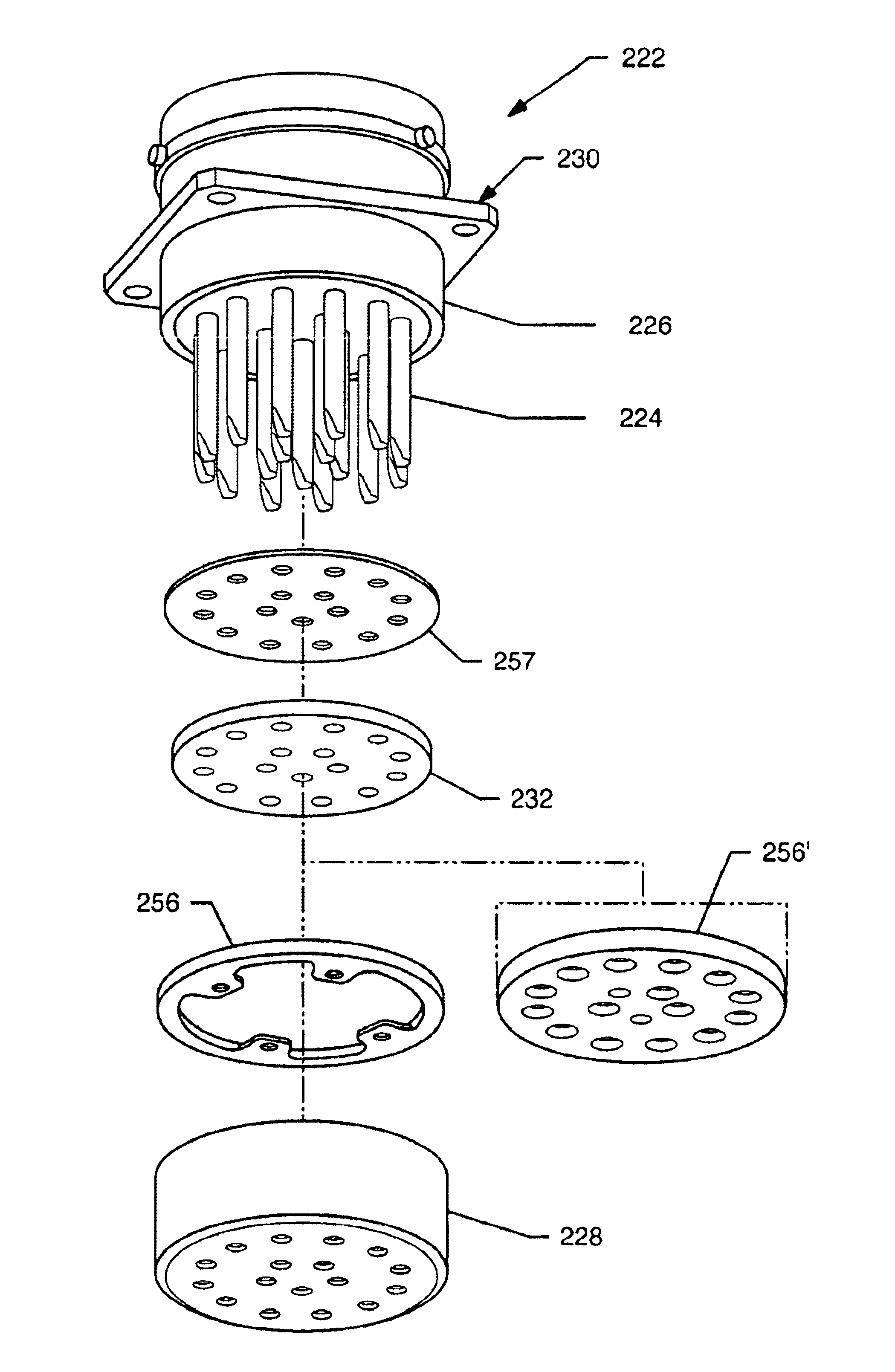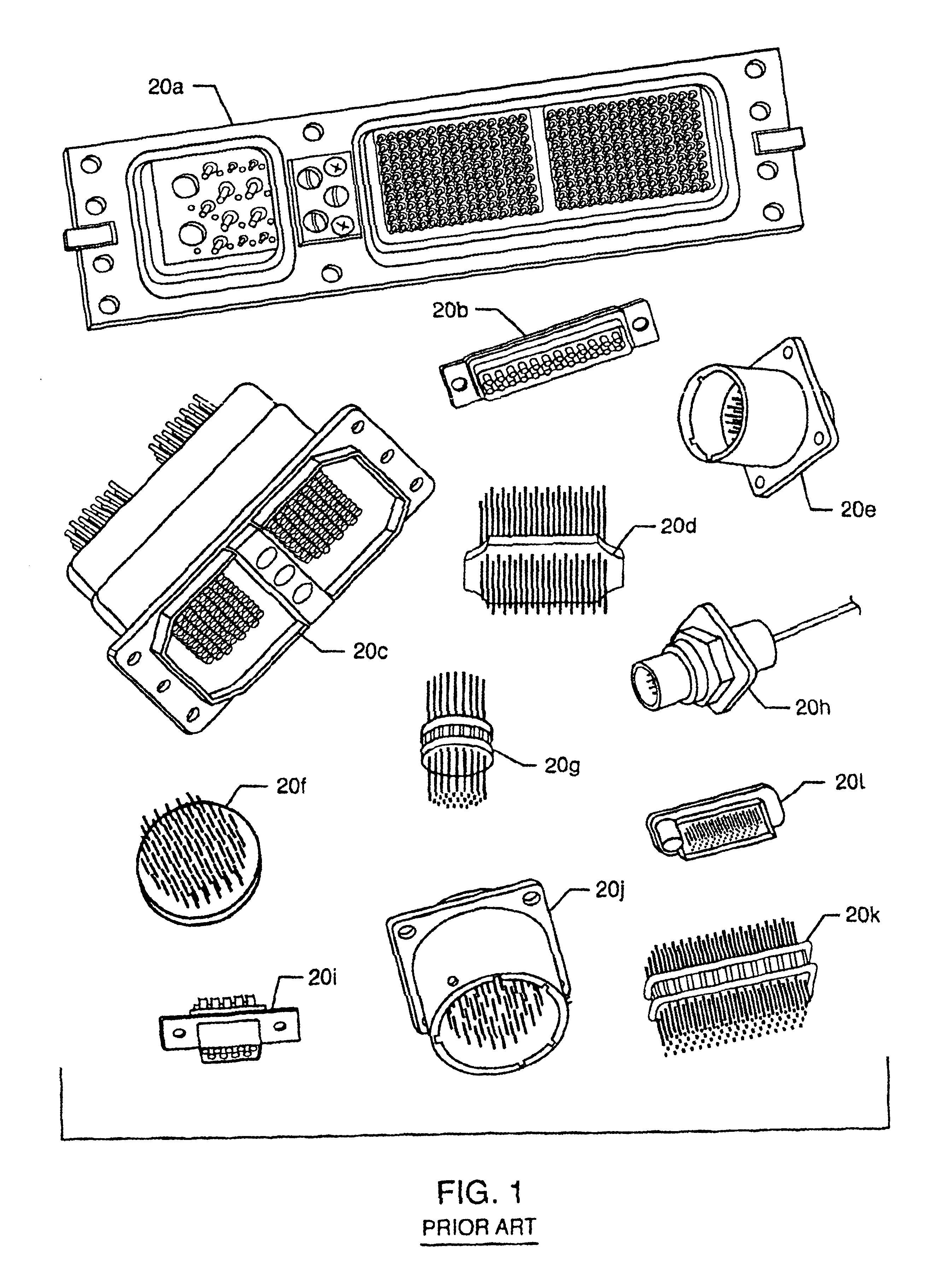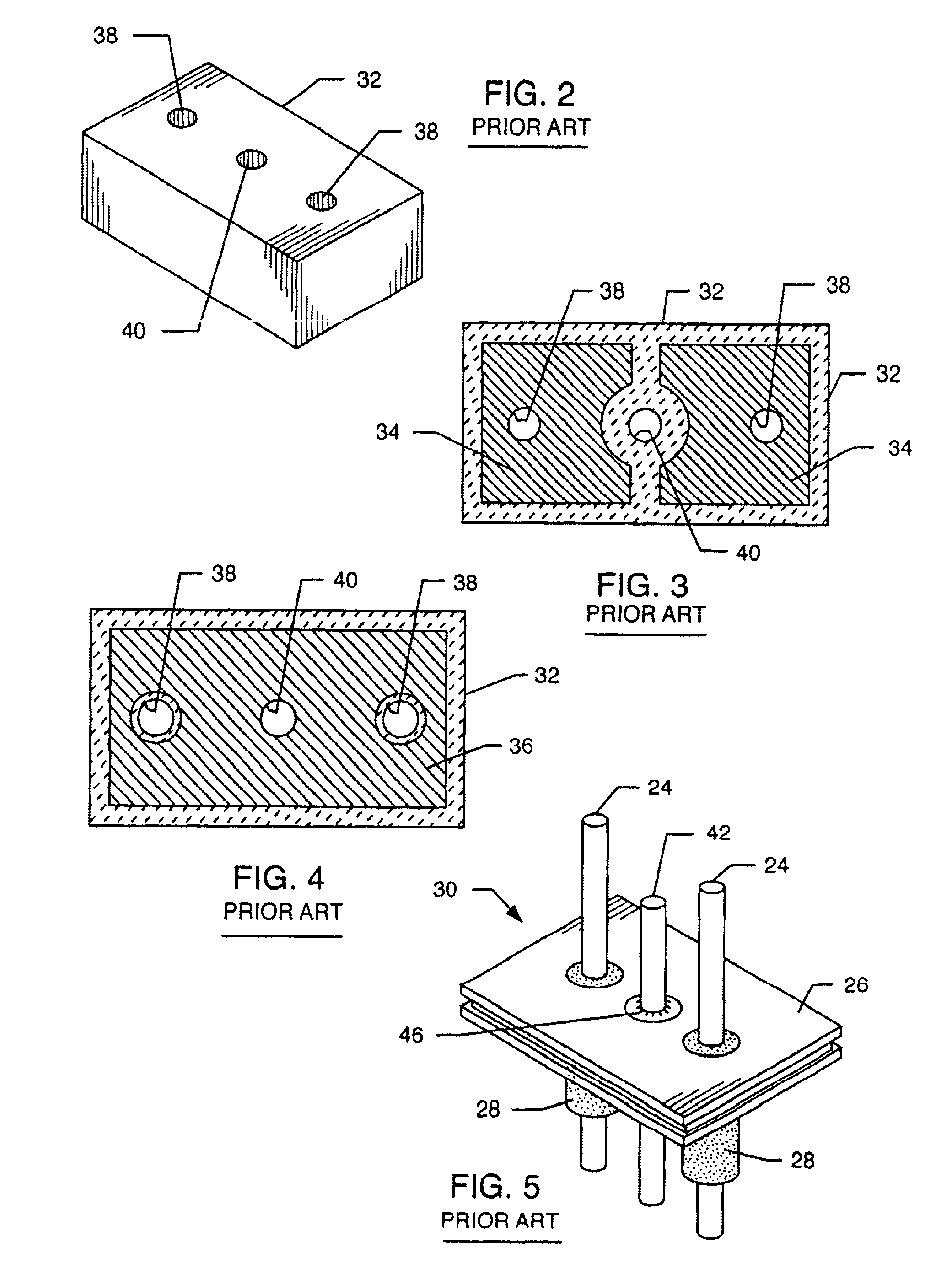EMI filtered connectors using internally grounded feedthrough capacitors
a technology of internal grounded feedthrough capacitors and connectors, which is applied in the direction of feed-through capacitors, coupling device connections, and therapy, etc., can solve the problems of inherently problematic installation of relatively brittle barium titinate-based ceramic capacitors, immediate or latent electrical failure, and inability to mount or install feed-through capacitors in typical electronic circuits. problems, to achieve the effect of avoiding the problems of conventional connectors and cost effectiv
- Summary
- Abstract
- Description
- Claims
- Application Information
AI Technical Summary
Benefits of technology
Problems solved by technology
Method used
Image
Examples
Embodiment Construction
[0044]The present invention relates to a method for mounting a monolithic ceramic capacitor to an electronic connector in a manner which provides the proper degree of both thermal and mechanical isolation from the connector housing and yet at the same time provides a low impedance RF connection so that a high degree of EMI filtering effectiveness (attenuation) is maintained. A feature of the present invention is that an internally grounded electrode plate can be grounded at multiple points (not just at its outside diameter or perimeter). This overcomes a serious deficiency in prior art filtered connectors that are physically large. In a large conventional prior art filtered connector, the pins closest to the center are a relatively long distance from the outside diameter or perimeter ground. This creates inductance which tends to reduce the filtering efficiency (attenuation in dB) of these pins. This situation is remedied by the use of a grounded pin near to the center of the array....
PUM
 Login to View More
Login to View More Abstract
Description
Claims
Application Information
 Login to View More
Login to View More - R&D
- Intellectual Property
- Life Sciences
- Materials
- Tech Scout
- Unparalleled Data Quality
- Higher Quality Content
- 60% Fewer Hallucinations
Browse by: Latest US Patents, China's latest patents, Technical Efficacy Thesaurus, Application Domain, Technology Topic, Popular Technical Reports.
© 2025 PatSnap. All rights reserved.Legal|Privacy policy|Modern Slavery Act Transparency Statement|Sitemap|About US| Contact US: help@patsnap.com



